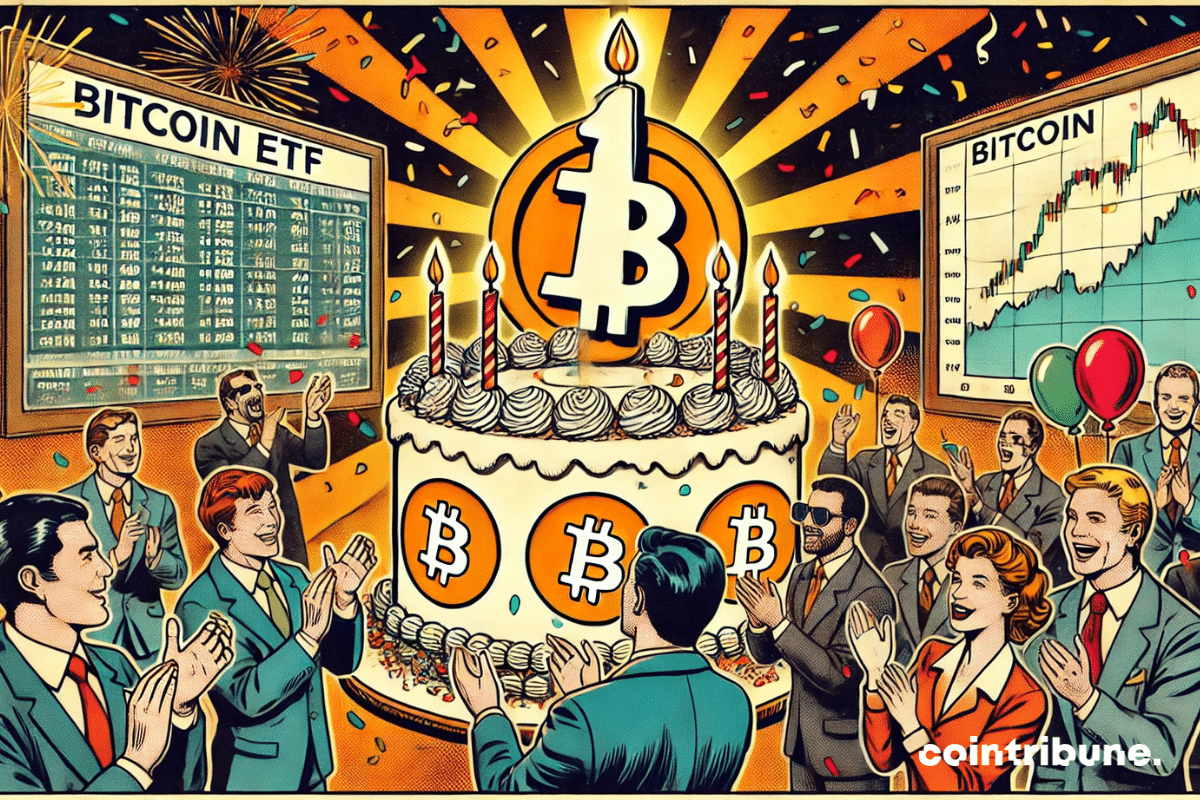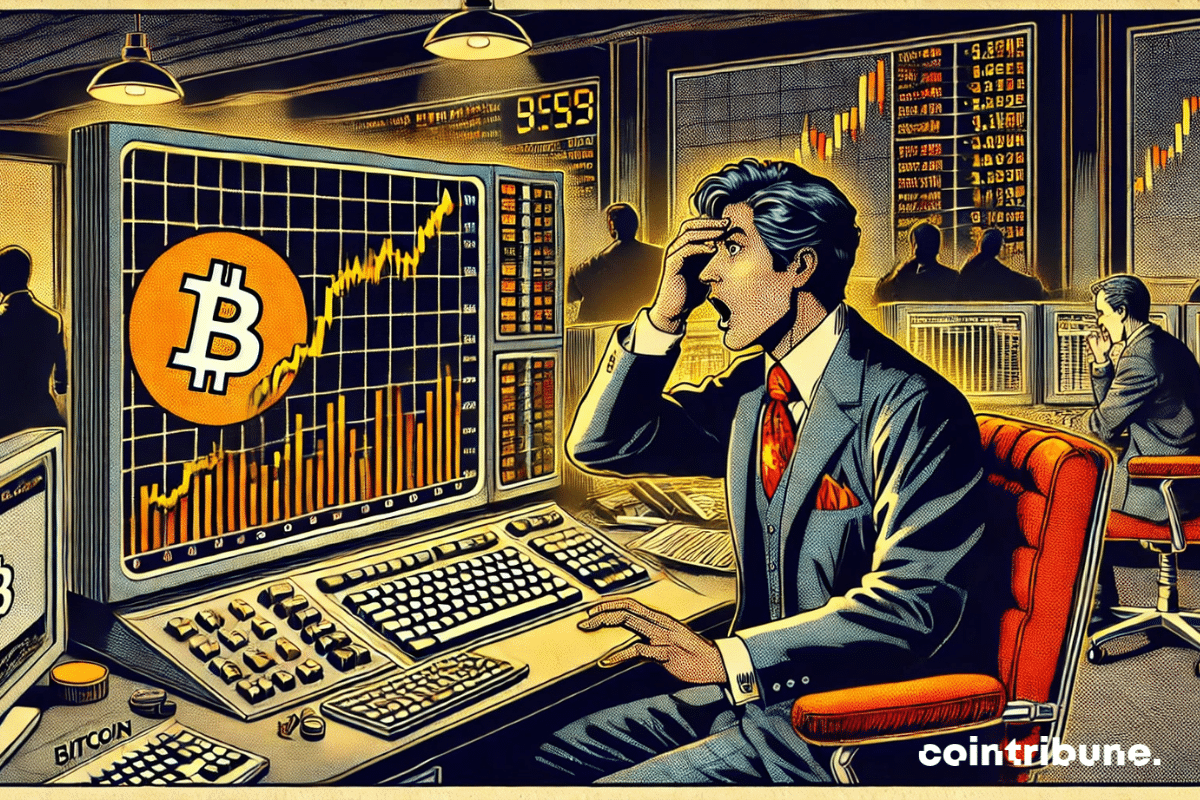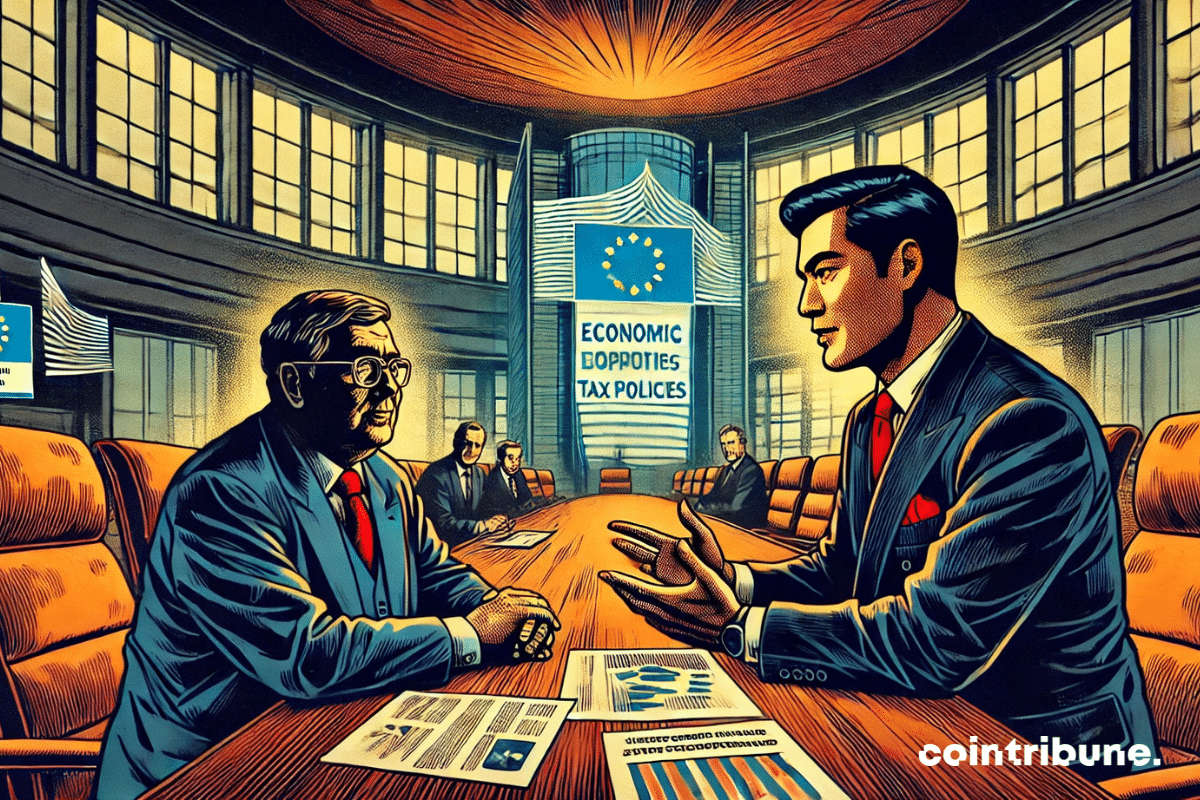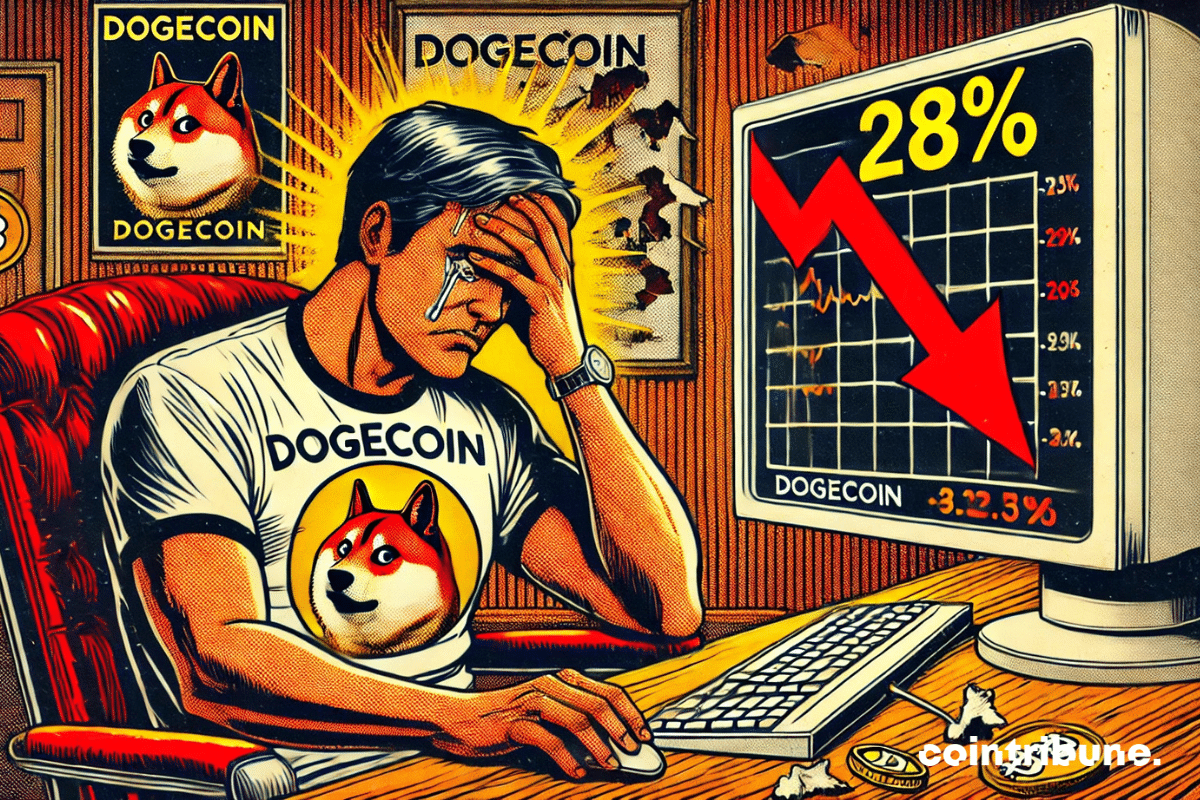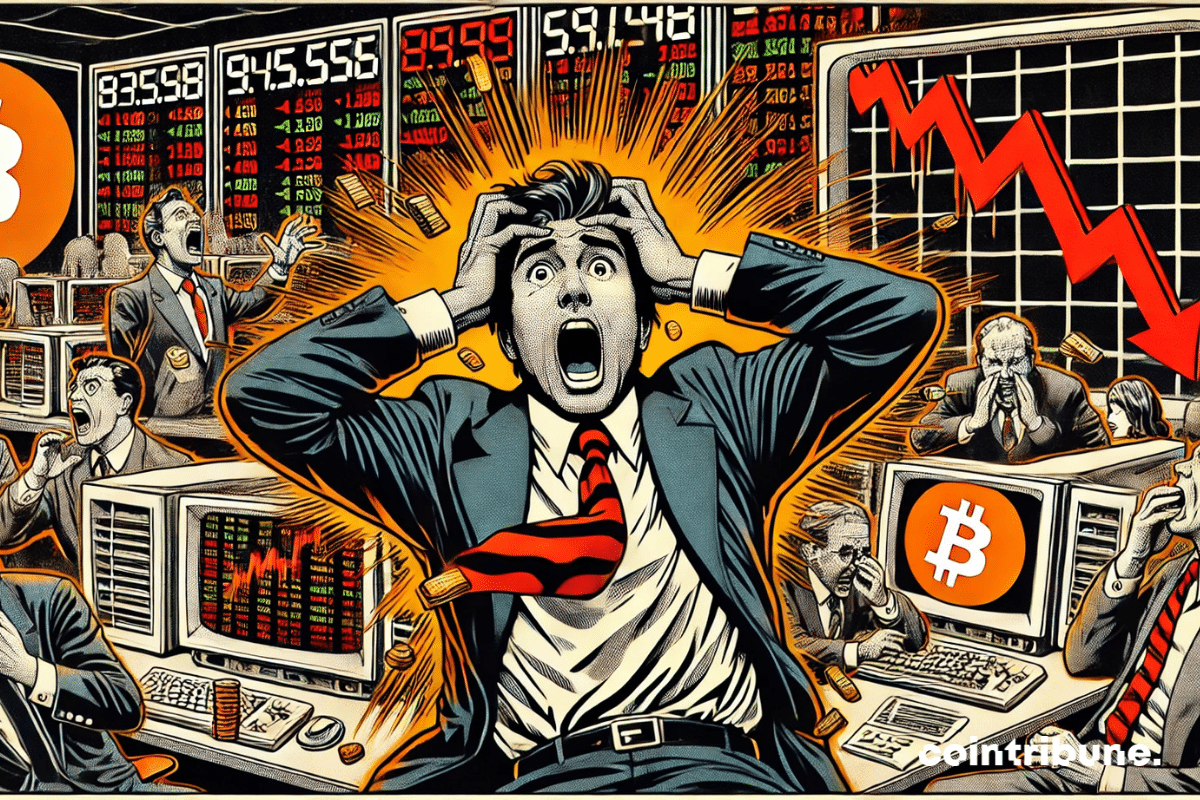Artificial intelligence is progressing at a rapid pace, making the distinction between humans and machines increasingly difficult. In response to this evolution, Worldcoin, now rebranded as World, aims to establish a universal proof of humanity through a biometric identification system based on iris recognition. The company has just announced that it has surpassed the milestone of 10 million verified users, a benchmark that signifies its massive adoption and fuels growing controversy. Indeed, the project relies on a network of orbs tasked with scanning the users' ocular data to assign them an unforgeable digital identity. According to its creators, this technology would secure digital interactions and ensure that only genuine humans access online services. Nevertheless, several governments and data protection authorities are concerned about the potential pitfalls of this model. Between technological promise and regulatory resistance, Worldcoin is part of a debate on digital identity and personal data governance. Its success or failure could shape the future of online authentication in a world where AI challenges the foundations of digital trust.
Home » Archives for Luc Jose Adjinacou » Page 23
Luc Jose A.
Diplômé de Sciences Po Toulouse et titulaire d'une certification consultant blockchain délivrée par Alyra, j'ai rejoint l'aventure Cointribune en 2019. Convaincu du potentiel de la blockchain pour transformer de nombreux secteurs de l'économie, j'ai pris l'engagement de sensibiliser et d'informer le grand public sur cet écosystème en constante évolution. Mon objectif est de permettre à chacun de mieux comprendre la blockchain et de saisir les opportunités qu'elle offre. Je m'efforce chaque jour de fournir une analyse objective de l'actualité, de décrypter les tendances du marché, de relayer les dernières innovations technologiques et de mettre en perspective les enjeux économiques et sociétaux de cette révolution en marche.
The crypto market evolves with the fluctuations, swinging between bursts of enthusiasm and periods of doubt. However, some assets manage to maintain their appeal despite the prevailing volatility. XRP perfectly illustrates this resilience, showing a clear resurgence in activity following a phase of uncertainty. Over 2 million transactions were recorded in a single day, a level rarely reached in recent months. This explosion in transaction volume goes beyond a mere usage indicator. It reflects a strengthening of the network, confirming renewed interest from investors and market players. At the same time, the price of XRP has stabilized above the key supports of $2.30 and $2.20, indicating bullish potential. If this momentum continues, XRP could regain a central place in the crypto transaction landscape and strengthen its long-term adoption.
Dogecoin is going through a decisive phase. For several days, its price has been fluctuating around $0.33, a key level that attracts the attention of analysts and investors. This threshold relies on a major support line, seen as a bulwark against a possible more pronounced correction. So far, DOGE is holding steady, but for how much longer? According to Trader Tardigrade, a closely followed analyst, the crypto may be finalizing a "selling climax bottom," a technical structure that often precedes a bullish reversal. However, if this scenario is confirmed, it would mark the end of the correction and pave the way for a significant rebound. Meanwhile, whales are heavily accumulating tokens, which strengthens the hypothesis of an imminent recovery. For DOGE, the stakes are high: maintaining its support and initiating a bullish trend before the market changes direction.
Financial markets hate uncertainty, yet the global economy is entering a period of instability. As we approach 2025, fears of economic slowdown, inflationary pressures, and political uncertainties are multiplying. Kristalina Georgieva, Managing Director of the International Monetary Fund (IMF), warns of "headwinds" and "divergences" that threaten global economic balance. Europe is struggling, the United States is surprising with its resilience, China is facing deflationary pressure, and Brazil is battling inflation. Behind these disparities, another concerning factor is the erosion of investments in education, which hampers innovation and long-term growth. As the IMF prepares to release its updated report, one question remains: do these economic fractures create an irreversible divide, or do they foreshadow a new world order?
The history of financial markets is marked by breakthroughs, those moments when an asset or an innovation disrupts established rules. 2024 will be remembered as the year when Bitcoin definitively crossed a milestone with the rise of spot ETFs. Long awaited, these financial products attracted record inflows, with $129 billion in assets under management in less than a year. From their launch, they generated unprecedented enthusiasm, allowing institutional investors to access Bitcoin in a regulated and secure framework. However, the impact goes beyond the numbers. Bitcoin is no longer just a speculative asset. It now competes with gold as a store of value. In November, BlackRock's Bitcoin ETF surpassed its gold-backed equivalent, a strong symbol of the changing perception among investors. As prospects for 2025 take shape, one question dominates: can this momentum be sustained? Between market consolidation, a possible expansion towards other cryptos like Solana and XRP, and the potential entry of new players like Vanguard, the year 2025 could very well redefine the balance of power in the financial markets.
Bitcoin is facing a new setback, shaken by a market that is reevaluating its expectations. Indeed, the publication of a solid economic report in the United States has strengthened the dollar, which reduces the likelihood of an imminent interest rate cut by the Federal Reserve. Such a reaction has led to a correction below $93,000. This has temporarily stalled the bullish momentum of crypto. However, Grayscale remains confident and views this pullback as mere turbulence rather than a reversal of trend. According to Zach Pandl, head of research at the company, the strength of the dollar and the restrictive monetary policy are temporarily weighing on the market, but the fundamentals of Bitcoin remain strong. With rising institutional adoption and a changing regulatory environment, the bullish trajectory seems intact despite short-term fluctuations.
For several years, the BRICS have been seeking to reduce their dependence on the US dollar by developing a monetary alternative. However, at the beginning of 2025, the reality of the foreign exchange market is slipping away from them. The dollar is asserting itself more than ever and reaching new heights while the currencies of the bloc are collapsing. The Indian rupee has plummeted to a historic low of 85.93, the Chinese yuan is weakening, and other local currencies are struggling to hold on. Despite the BRICS' efforts to counter the hegemony of the greenback, the current dynamics expose the limits of their dedollarization strategy and raise the question of the viability of a credible alternative.
The Chinese economy is wavering between stagnation and decline, revealing lasting structural flaws. In December, the consumer price index only increased by 0.1% year-on-year, confirming intensifying deflationary pressure despite the government's repeated attempts to revive growth. The drop in food prices (-0.5%) and consumer goods (-0.2%) illustrates the lack of dynamism in domestic demand, as households remain cautious and businesses hesitate to invest. Thus, the real estate crisis, coupled with the ineffectiveness of previous stimulus measures, fuels uncertainties. This slowdown goes beyond a cyclical phase. It calls into question the resilience of the Chinese economic model and its short-term outlook.
The housing credit market in France is undergoing a significant shift. After a period marked by high interest rates, which hindered access to property ownership, the trend is reversing. François Villeroy de Galhau, governor of the Bank of France, announced that mortgage rates fell below 3.4% in November 2024, down from 4% in January. This drop is attributed to a slowdown in inflation, which is expected to reach 1.5% in 2025, after having weighed on the economy in recent years. This development is a relief for borrowers, but its implications go beyond the real estate sector. A relaxation of credit costs generally promotes economic recovery, restoring purchasing power to households and encouraging investment. This dynamic could also impact other asset classes, particularly cryptocurrencies. A more stable economy and smoother access to financing prompt some investors to reassess their strategies. With this drop in rates and the anticipation of possible monetary easing by the European Central Bank (ECB), the real estate market could regain a more favorable dynamic.
Trade tensions between the European Union and China are reaching new heights. Indeed, for several months, Brussels has been targeting Chinese companies accused of benefiting from public subsidies, which distorts competition. Under the Foreign Subsidies Regulation (FSR), the EU has launched several investigations, particularly against CRRC, the Chinese giant in railway equipment, and manufacturers of solar panels involved in European projects. In response to these investigations, Beijing has reacted strongly and denounced discriminatory practices. This standoff, which reflects deep divergences over the rules of international trade, could redefine the balance of power between the two economic powers. While the EU seeks to protect its market, China is concerned about a tightening of regulations that would hinder the expansion of its industrial champions. In this context, investors and companies are preparing for a significant climate of uncertainty, where every political decision can influence the dynamics of exchanges between Europe and the world's second-largest economy.
Artificial intelligence is reshaping the technological and economic power dynamics, propelling certain nations into becoming new nerve centers of innovation. Indeed, India, with its rapidly expanding market and substantial talent pool, is attracting tech giants in a race for sector dominance. Microsoft has recently made a decisive move by announcing a $3 billion investment to develop its cloud and AI capabilities in India. This ambitious initiative includes the construction of new data centers, the deployment of cloud infrastructure, and especially a large training program aimed at 10 million Indians by 2030. Far from being just an economic bet, this investment is part of a long-term strategy to anchor Microsoft at the heart of India's digital transformation. With the support of the government, the multinational aims to stimulate the AI startup ecosystem and accelerate the adoption of cutting-edge technologies on a large scale.
Dogecoin is experiencing a significant slowdown, marked by a decrease in investor interest and a decline in activity on social media. This trend contrasts with the past euphoria surrounding this cryptocurrency that originated from a simple meme. According to data from Santiment, enthusiasm for DOGE has reached a historically low level, reflecting a gradual loss of market confidence. The drop in investor sentiment, combined with a significant reduction in online discussions, highlights a climate of wait-and-see where caution seems to prevail over speculation. However, this weakening is not universally accepted. Some observers see it as a typical market dip, conducive to a future recovery. In their view, this lull could represent a strategic buying opportunity for investors willing to bet on a potential rebound, provided the overall market regains an upward momentum.
The year 2025 begins under the sign of instability for the crypto market. After briefly exceeding the symbolic threshold of 100,000 dollars on January 7, Bitcoin experienced a dramatic reversal, falling to 92,500 dollars in just a few hours. This sudden decline cannot be explained by a technical factor but rather by major macroeconomic elements. Investors are closely monitoring the monetary policy of the U.S. Federal Reserve (Fed), whose decisions directly influence financial markets. So far, many had anticipated a drop in interest rates as early as the first quarter of 2025. However, the latest economic data in the United States indicate stronger-than-expected growth, which challenges this assumption. As a result, markets are reassessing their expectations and adjusting their positions. This uncertainty has triggered a wave of liquidations that has contributed to Bitcoin's decline.
Donald Trump's statements just days before his return to the White House have reignited tensions on the international stage. During a press conference, the elected president mentioned the possibility of annexing the Panama Canal and Greenland, strategic territories whose geopolitical significance far exceeds American borders. Far from being content with a mere statement of intent, he refused to rule out the use of force, provoking immediate reactions from the countries involved. As the world faces increasing geopolitical tensions, these stances raise many questions. Is Trump seeking to reshape international power dynamics, or is this a communication strategy aimed at influencing future diplomatic negotiations? What are the implications for relations between the United States and its partners? A look back at an announcement that certainly reignites fears of a return to an unpredictable American policy.
When a country imports more than it exports, its economy weakens and its dependence on external markets increases. In November 2024, France's trade deficit stood at 7.3 billion euros, which represents an improvement of 0.3 billion euros compared to the previous month. This slight reduction in the deficit is primarily explained by an increase in energy exports, which grew faster than imports. However, this improvement does not call into question the structural fragility of French foreign trade. Despite this temporary improvement, the imbalance between exports and imports remains critical. The domestic industry struggles to compete with international competition, and the trade balance remains largely in deficit. This situation raises questions about the competitiveness of French companies and their ability to sustainably establish themselves in foreign markets. Thus, the evolution of the deficit in the coming months will largely depend on the energy situation and the economic policies implemented to rectify the trade balance.




